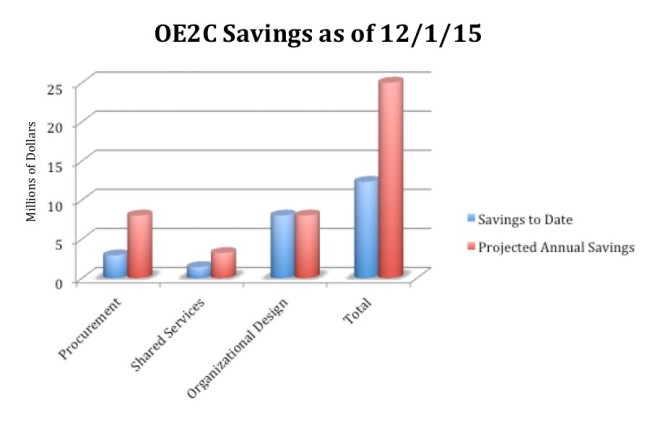As SMU jumps into its second century, big changes are coming to campus, but most of them are not apparent to SMU’s largest population: the student body. Operational Excellence for the 2nd Century, or OE2C, has been in action for the past 18 months, however most students are completely unaware of the major changes our campus is making.
“I have no idea what that is,” said Nick Guiscardo, a mechanical engineering major, when asked what he knew about OE2C.
SMU is working to become a top 50 university. With rising college tuition across the country, and a 4.9 percent rise in tuition in the past year, SMU officials say that they have taken a proactive approach to save money and stop the upward climb of tuition.
Over the past year, OE2C has been working to make the administration more efficient by streamlining purchasing, staff layoffs, and eliminating some office perks such as printers and cell phones as part of seven initiatives taking place throughout campus.
OE2C is a “review of administrative functions to ultimately save money to reallocate to academics,” according to Administrative Vice President for Operational Excellence Julie Wiksten.
Bain and Company, a consulting firm, was hired in April 2014 to help evaluate all areas of campus spending and to advise the OE2C Executive Committee on money saving potential. According to The Daily Campus, University of California Berkeley paid Bain over $7 million to do similar consulting work for their campus.
“Students sometimes talk about Bain, but don’t really know what Bain does,” said Jacob Conway, the student representative on the OE2C steering committee and the student representative on the board of trustees.
Bain seemed to be a villain of conversations faculty experiencing these administrative changes.
However, despite some misconceptions, Bain did not make any decisions, according to Wiksten. Bain researched the campus to create proposals and suggestions, however the OE2C Executive Committee makes all the decisions. The committee consisted of President R. Gerald Turner, Interim Provost Harold Stanley, Vice President for Executive Affairs Tom Barry, Vice President for Business and Finance Chris Regis, and Faculty Senate President and Dedman College Professor Douglas Reinelt has all final say in OE2C decisions.
While some of the changes on campus may take some getting used to, such as fewer printers available to faculty and no more free cell phones for faculty, these small changes have made a big impact so far.

The graph above shows OE2C savings to date in millions. So far the few initiatives that the committee has taken has saved SMU $12.3 million and there are more savings to come.
“This [OE2C] is 100 percent SMU managed and directed,” said Wiksten.
Bain has been off-campus for about three months now, and already the OE2C office plans to release as many as four new initiatives in January 2016 to be started throughout spring and summer 2016.
The seven initiatives in action now are IT, finance, organization design, procurement, contract administration, travel and entertainment, and facilities.
However, some of these savings come at a cost. The Daily Campus reported that OE2C changes eliminated some positions and that there would be more layoffs to come.
Changes and adjustments are happening constantly and they will continue as the university continues to try and save and reallocate money. The OE2C office keeps their blog up to date for people to follow the changes and savings.
Students can get involved by sharing ideas or concerns anonymously through the OE2C website. That is the best way for students to get involved with the process, according to Wiksten.
“We have a voice in how the money gets spent,” said Conway. “Make what you want heard.”








